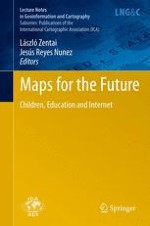2012 | OriginalPaper | Buchkapitel
19. The World in Their Minds: A Multi-scale Approach of Children’s Representations of Geographical Space
verfasst von : Veerle Vandelacluze
Erschienen in: Maps for the Future
Verlag: Springer Berlin Heidelberg
Aktivieren Sie unsere intelligente Suche, um passende Fachinhalte oder Patente zu finden.
Wählen Sie Textabschnitte aus um mit Künstlicher Intelligenz passenden Patente zu finden. powered by
Markieren Sie Textabschnitte, um KI-gestützt weitere passende Inhalte zu finden. powered by
